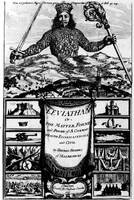Since it is scarcely possible for planning to be politically neutral, I would like to state an enthusiasm which underlies this book: the mixed economy. Wherever possible, land users should be free to do their own thing in their own way. Wherever necessary, they should be regulated in the public interest. A doctrinaire attachment to either principle is insupportable. Even the great opponent of state planning, Friedrich von Hayek, in The Road to Serfdom, aknowledged:
Where, for example, it is impracticable to make the enjoyment of certain services dependent on the payment of a price, competition will not produce the services... Nor can certain harmful effects of deforestation, or of some methods of farming, or of the smoke and noise of factories, be confined to the owner of the property in question. In such instances we must find some substitute for regulation by the price mechanism (Hayek 1979:28).
Yes, yes and yes again. This book reviews some of the substitutes for 'regulation by the price mechanism'. Societies must find and implement different solutions, ranging from 'all public' to 'all private', depending upon context and circumstances. Environmental Impact Design is an example of the mixed economy in action: private developers may be asked to modify their designs in the interests of the public welfare; public developers may be asked to modifiy their designs in the interests of firms and individuals. To the degree that town planners serve public interests and architects serve private interests, this approach treats landscape planning as 'planning writ small' and 'architecture writ large'.
Thomas Hobbes, a leading theorist of liberal democracy, is remembered for having described the 'state of nature' as follows:
No arts; no letters; no society; and which is worst of all, continual fear and danger of violent death; and the life of man, solitary, poor, nasty, brutish and short. (Hobbes 1651:Ch13)
Hobbes believed this wretched condition, so prelevant in his lifetime, could be ended only by the rule of law and the establishment of a civil society which fosters private ownership of property. In those countries where these measures have been taken, Hobbes has been proved correct. Fukuyama even detects an 'end of history', not for any gloomy reason, but becuase he believes the advance of liberal democracy has brought an end to the era of war between the great powers (Fukuyama, 1992). Today, we face a challenge which requires dilution of private property rights. As our numbers have grown, the impact of humanity upon the environment has become so heavy that we are in danger of being returned to that very 'state of nature' from which Hobbes helped us escape.
Perhaps we can learn from non-human communities. Some of this book's background and organisation is explained by the start of my interest in the subject. I think it began with a book on seashore ecology given to me at the age of 12, by an artist. The book explained seashore zonation and I attempted a zoning diagram of the beach near our home. The zones ran from a hardy periwinkle zone, which was splashed only by the largest waves at the highest tides to a laminaria zone, known to us as the 'underwater forest', which was hardly exposed by the lowest tides. The wonder of the beach was the rock pools. After watching the breakers roar in from the North Sea, one could walk the shore at low tide and view the most perfect assemblies of plants and animals. Each pool was a symbiotic community. No pool was colonised exclusively by periwinkles, coral, breadcrumb sponge, or bladder wrack. Different species lived together and gained from each other's presence, as should land users.
Terrestial habitats have more species diversity than rock pools, with interlocking food chains of producers and decomposers. When human societies attempt to bring 'order' out of nature's chaos, they have a depressing tendency towards monoculture (cultivation of only one crop). Vast areas are allocated to spruce or larch or wheat or potatoes or housing or industry or recreation. Compared to the rock pool, there is little diversity, little symbiosis, little sustainability and little beauty. Part 1 of this book, which is plan-oriented, gazes at the whole pool; Part 2, which is project-oriented, examines the niche relationships between land uses. 'Planning' is used in the title of Part 1 and 'Design' in the title of Part 2. The distinction between the two activities is not firm, though planning projects tend to be larger in scale, longer in duration, inclusive of several land uses, more concerned with public than private goods and more to do with function than aesthetics.

